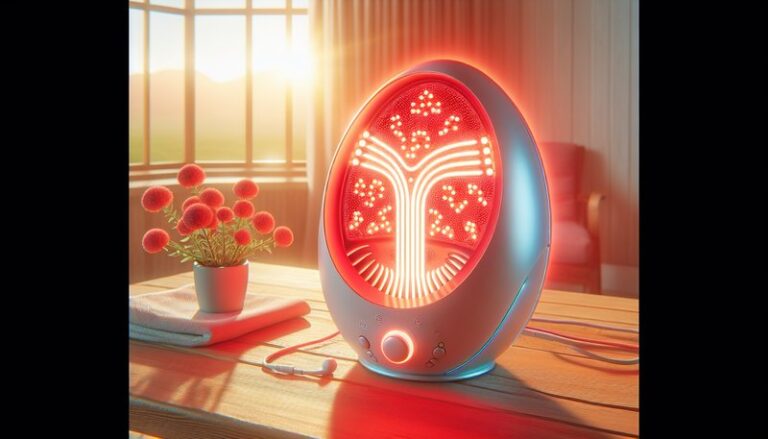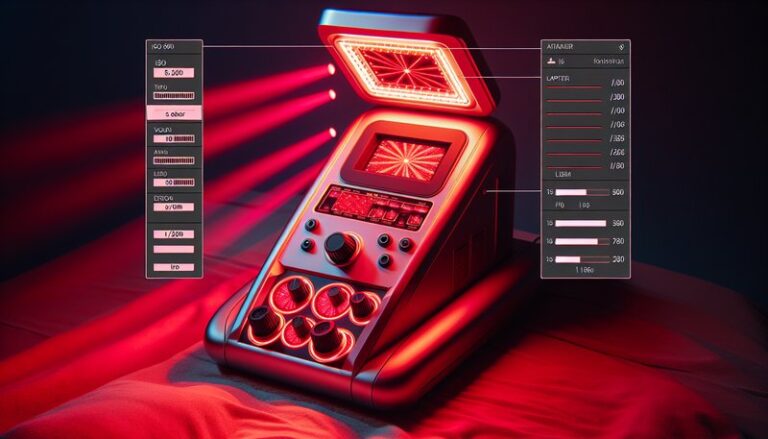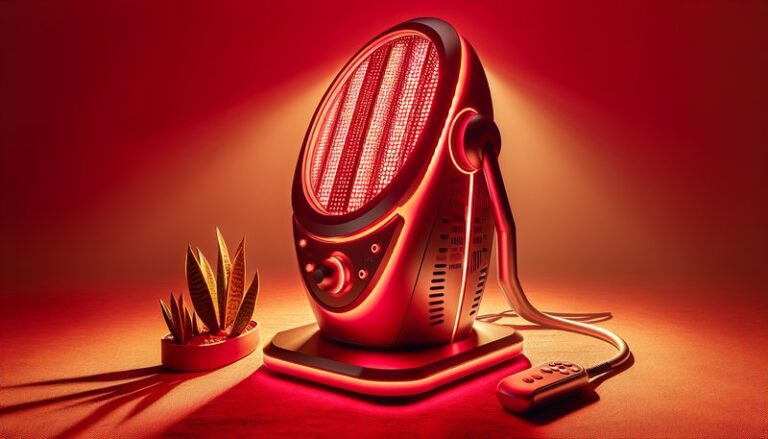Is Red Light Therapy Good For Skin Cancer?
Is Red Light Therapy Good For Skin Cancer?
Can red light therapy play a role in the battle against skin cancer?
This article explores the potential of red light therapy as an adjunctive treatment for skin cancer, examining its benefits, implications, and alternatives. We aim to provide a comprehensive overview for those considering this therapy, ensuring an informed decision can be made.
Key Takeaways
- Red light therapy may help accelerate healing and reduce inflammation, which are beneficial for skin health.
- While some studies indicate potential supportive roles, red light therapy is not a standalone treatment for skin cancer.
- It’s essential to discuss any complementary therapies with a healthcare provider to ensure safe and effective treatment options.
What is Red Light Therapy?
Red light therapy (RLT) is a non-invasive treatment that utilizes specific wavelengths of light to stimulate cellular functions. It typically involves the use of light-emitting diodes (LEDs) that emit light in the red and near-infrared spectrum. Originally used for various therapeutic purposes, RLT is gaining popularity in skin care for its ability to promote healing and tissue regeneration.
RLT works at the cellular level, boosting the energy production of mitochondria, which leads to enhanced healing processes, reduced inflammation, and potentially improved skin conditions.
What are the Benefits of Red Light Therapy?
Exploring the benefits of red light therapy reveals several reasons why it is gaining traction in both medical and cosmetic arenas.
Accelerated Healing
One of the most notable benefits of RLT is its ability to promote quicker wound healing. This can be particularly valuable for individuals recovering from skin cancer surgeries. Studies indicate that RLT can enhance collagen production and improve the healing of tissues.
Reduction in Inflammation
RLT has been shown to reduce inflammation, which can be an important factor in managing skin health. Reducing localized inflammation can improve skin appearance and assist in healing following skin cancer treatments.
Enhanced Skin Appearance
Regular use of red light therapy can lead to improvements in skin texture and tone. Many find that RLT helps reduce the appearance of scars, wrinkles, and fine lines by promoting cell turnover and increasing blood circulation.
Supports Cancer Recovery
While RLT should not replace conventional skin cancer treatments, it may be used as a supportive measure to help patients after surgery or other therapies, improving overall skin health and enhancing recovery processes.
Is it Possible to Use Red Light Therapy for Skin Cancer?
Using red light therapy for skin cancer presents unique considerations. While RLT can positively impact skin health and healing, it is important to understand its role concerning actual cancer treatment.
RLT is not a treatment for cancer itself, meaning it cannot eliminate cancer cells or replace standard treatments such as surgery, chemotherapy, or radiation. Instead, it may act as a complementary therapy that supports healing and recovery post-treatment.
What are the Advantages of Using Red Light Therapy?
Utilizing RLT can provide several advantages when integrated into a comprehensive treatment plan:
Non-Invasive Nature
RLT is non-invasive and typically involves minimal risks or side effects compared to surgical or chemical interventions, making it a gentle option for individuals in recovery.
Dive deeper into Can Red Light Therapy Help Cellulite?
Convenient and Accessible
RLT treatments can often be performed in specialized clinics or at home with the right devices, providing flexibility regarding schedules and access to therapy.
Complementary to Traditional Treatments
When used alongside traditional therapies, RLT may enhance treatment outcomes by promoting better skin health, thus supporting overall patient wellness.
Cost-Effective Option
In some cases, RLT can be more affordable compared to ongoing medical treatments or procedures, making it a practical option for some patients.
What are the Disadvantages of Using Red Light Therapy?
Although RLT offers various benefits, there are some disadvantages worth mentioning.
Limited Efficacy in Cancer Treatment
RLT should not be relied upon as a primary treatment for skin cancer. Its effectiveness in combating cancer cells remains unproven, which could lead to a false sense of security.
Need for Professional Guidance
Before starting RLT, it is essential to consult healthcare professionals to ensure it does not interfere with any ongoing treatment or medications.
Potential for Misuse
Without proper guidance, individuals may misuse red light devices or expect improbable outcomes, leading to disappointment or adverse effects.
What are the Things to Consider Before Using Red Light Therapy?
Before incorporating RLT into a skin cancer treatment plan, certain important factors should be taken into account.
Consultation with Healthcare Providers
Always discuss the use of RLT with your oncologist or dermatologist to ensure it complements existing treatments without causing harm.
Understanding Device Quality
Not all red light devices are created equal. Selecting high-quality, clinically confirmed devices is crucial for achieving desired results.
Conforming to Treatment Protocols
Adhering to recommended treatment protocols and durations is essential to avoid ineffective or damaging treatments.
Evaluating Individual Skin Conditions
Understanding personal skin types and conditions can help tailor RLT usage for optimal results, as individual responses to therapy may vary.
What are the Alternatives to Red Light Therapy?
For those considering options for enhancing skin health or supporting recovery processes related to skin cancer treatment, several alternatives are available.
Topical Treatments
Topical therapies, including creams and ointments, can help address skin issues, hydrate, and assist in healing post-surgery.
Photodynamic Therapy (PDT)
PDT is an effective treatment for certain skin cancers. It utilizes light-activated drugs that target and destroy cancer cells selectively.
Laser Treatments
Certain laser treatments can also promote healing and rejuvenation of the skin, offering another option for those recovering from skin cancer.
Cryotherapy
Cryotherapy, or the use of extreme cold to destroy abnormal skin cells, can be an effective alternative for specific skin conditions, including pre-cancerous lesions.
Conclusion: Is it Recommended to Use Red Light Therapy for Skin Cancer?
In conclusion, while red light therapy can aid in skin healing and inflammation reduction, it cannot replace conventional cancer treatments. It is recommended as a complementary option for improving skin health and possibly enhancing recovery. A thorough consultation with healthcare providers is essential for ensuring safe and effective use of RLT programs.
Frequently Asked Questions
Can red light therapy cure skin cancer?
No, red light therapy cannot cure skin cancer. It may support healing processes but should be used in conjunction with standard treatments prescribed by healthcare professionals.
How often can I use red light therapy?
Usage frequency can vary based on individual needs and the guidelines provided by your healthcare provider. Many users benefit from using RLT several times a week.
Get informed with Is Red Light Therapy Effective for Weight Loss?
Are there any side effects of red light therapy?
RLT is generally considered safe with few side effects. Some individuals may experience mild skin irritation, but these cases are rare.
What should I look for in a red light therapy device?
Look for devices that are FDA-cleared, feature appropriate wavelengths for skin therapy, and come with clear usage guidelines. Consulting with a professional can aid in selecting the right device.






